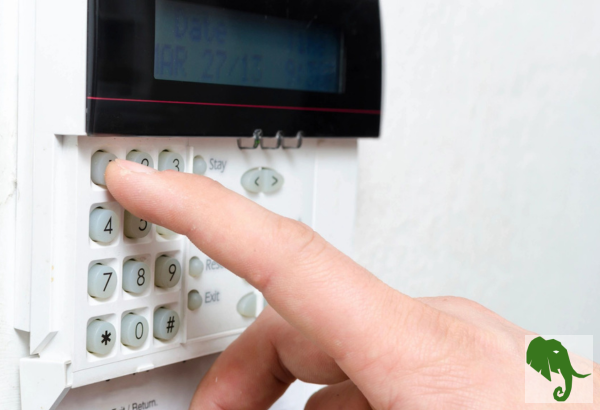
This is the second post in our series on making your home safer. We covered making the exterior of your home more secure in our first post. And now we are going to talk about securing the interior of your home which is essential for ensuring the safety and well-being of you and your loved ones.
In this post, we will explore various strategies and practical tips to fortify your home’s interior, from security systems and lighting, to safe rooms, locks, and cameras. By implementing these measures, you can create a safer living environment and gain even more peace of mind in the mix.
Security Systems: The Cornerstone of Home Protection
A robust security system is one of the most effective deterrents against intruders. Modern security systems offer a range of features that can be tailored to meet your specific needs.
- Comprehensive Coverage: Ensure your system covers all entry points, including doors and first-floor windows, as well as basement windows, at the very least. You should consider incorporating add-ons too like glass break sensors, cameras, and motion sensors for added security.
- Cellular Connectivity: Opt for a cellular-based system, which is more reliable than traditional landline systems and less susceptible to being disabled by intruders. Plus, it will also likely give you capabilities with your system using mobile apps, a nice convenience.
- Professional Monitoring: Have your system monitored by a professional service. If an alarm is triggered and you cannot respond, the monitoring station will alert the police, ensuring a swift response.
False alarms are a part of the experience, be prepared to respond to your monitoring service likely with a password. No need to have law enforcement coming out for now reason.
Also look into whether your city or county requires your security system to be registered with them. This may help avoid or reduce fines, especially when it comes to false alarms. - Visible Deterrents: Display security system stickers on windows and place signs in your yard. Visible signs of a security system can deter potential intruders who prefer easier targets. Again, it is all about becoming a ‘hard’ target versus a soft.
- Affordability and Use: While security systems can come with numerous high-tech features, it’s essential to cover the basics without overpaying. Monitoring services typically cost between $14 and $60 per month, depending on the package. To avoid the high side of monitoring services, look to work with smaller alarm companies versus the big name entities, as the big ones tend to charge much more.
- Consistency: Make a habit of arming your security system whenever you leave home and consider arming it at night as well. Just remember to disarm it in the morning to avoid setting off the alarm unintentionally.
By installing and consistently using a security system, you can significantly enhance your home’s security and deter potential intruders.
Interior Lighting: A Simple Yet Effective Deterrent
Proper interior lighting is not just about visibility; it also plays a critical role in home security. Lights can signal to potential intruders that someone is home, thereby deterring criminal activities.
- Strategic Placement: Ensure that key areas of your home, such as entrances, hallways, and living spaces, are well-lit. This reduces hiding spots for intruders and makes it easier to spot any unusual activity.
- Use Timers and Smart Outlets/Bulbs: When you are away, use timers or smart outlets to control your lights. Set them to turn on and off at different times to give the illusion of occupancy. Smart outlets can be controlled via an app on your phone, offering convenience and flexibility. It is all so easy these days.
- Night Lighting: Consider installing night lights in key areas to provide visibility without the need for full illumination. This can help you navigate your home safely at night and deter intruders.
Remember, nothing is a 100% guarantee, but effective lighting can make your home less attractive to potential intruders. Plus, it is nice to come home to a well lit home after dark.
Creating a Safe Room: A Last Line of Defense
In the unfortunate event of a home invasion, having a designated safe room can provide a secure refuge for you and your family. We are not talking about movie-level, fortress-style safe rooms, though if you have the money and interest, those are options as well. What we are talking about is a space or a room, like your master bedroom, where you have gear and a plan to get to should something go sideways.
- Selecting the Room: Choose a room that is easily accessible for all family members. Ideally, this room should have a sturdy door and minimal windows. Bedrooms often make good safe rooms because they are typically equipped with solid doors and locks. Consider whether your master is an option, or if you have young kids that cannot be expected to make it to your master, you may want to consider a child’s room as your safe room.
- Equipping the Room: Stock your safe room with essential items such as defensive firearms (if you are trained and it is safe to do so), flashlights, glow sticks, spare keys, a phone, and copies of identification like driver’s license and/or passport. Ensure that firearms are stored safely (read: locked up), especially if you have children. Have a game plan to get to and use the items in your safe room.
- Family Training: Train your family members, including children, on how to quickly and calmly get to the safe room during an emergency. If you have small children or babies, you may choose their room as the safe room or have a plan to retrieve them. Room clearing should not really be your go-to game plan unless of course you need to get to children that cannot get to you otherwise.
- Calling for Help: Once in the safe room, call 911 and wait for the police to arrive. Do not leave the room until the authorities give you the all-clear. If an intruder attempts to enter the safe room, have a plan for how to respond and defend yourself and your family as needed.
Having a safe room is a critical component of a broader home security strategy. Ensure that all family members understand and practice the plan regularly.
Locks and Windows: Strengthening Entry Points
Securing your doors and windows is fundamental to home security. Here are some tips to ensure they are as secure as possible:
- Double Cylinder Deadbolts: For doors with glass panels, use double cylinder deadbolts that require a key to open from both sides. This prevents intruders from breaking the glass and unlocking the door. It does not take that much more effort to use a key to unlock them from the inside.
- Single Cylinder Deadbolts: For solid doors without glass, single cylinder deadbolts are sufficient. Install them so the thumb turn (lever) points toward the door jamb, making it easy to see if they are locked from across the room.
- Window Locks: Ensure that all windows have functioning locks and use them. Regularly check windows to ensure they are secure, as open or unlocked windows provide easy access for intruders.
- Habitual Checks: Make it a habit to check all doors and windows before leaving the house and before going to bed. This routine can significantly enhance your home’s security and your family’s overall safety.
Developing these habits can create a more secure environment and offer peace of mind.
Improve Door Security
The main entry points to your home are critical for security. Here are some steps to fortify them:
- Stop Answering the Door to Strangers: If you’re not expecting anyone, don’t open the door. Prioritize safety over social niceties. If your not expecting anyone or do not know who is ringing your doorbell or knocking, you can consider speaking loudly and letting them know your not alone and that you are on the phone with whoever. Just whatever you do, do not open the door, especially if you are home alone.
- Install Quality Locks: Use deadbolts and consider locks that require a key from the inside if your door has glass panels. This makes it harder for intruders to get in. Of course, nothing is 100% but we do not want to make things easy either.
- Use Longer Screws: Replace standard screws in door jams and hinges with 3-inch screws to make it harder to kick in the door.
- Opt for Solid Doors: Solid doors provide more security than those with glass panels. If you prefer a peep hole, choose a one-way version to prevent people outside from seeing in.
- Door Jamb Locks or Re-enforcement: If so inclined you might want to consider adding on door jamb locks or jamb re-enforcement devices. Lots are on the market for your consideration. These might be a good idea for outside-facing doors in the basement or doorways used less often. Remember, it is about making things harder while also giving you peace of mind.
Interior Security Cameras: An Extra Layer of Protection
Installing security cameras inside your home can serve multiple purposes, from monitoring pets and babysitters to keeping an eye on your property when you are away.
- Camera Placement: Place cameras in key areas such as entryways, living rooms, and hallways. Additional coverage in basements, nurseries, and garages can also be beneficial.
- Features to Consider: Opt for cameras with night vision, sound, and voice capabilities. Wireless cameras offer flexibility in placement, and many models can send alerts to your phone, providing real-time updates. Look for higher resolution cameras that will help you actually see more details, like faces.
- Integration with Security Systems: Consider integrating your cameras with your home security system for a comprehensive approach. This can enhance your ability to monitor and respond to any incidents.
Security cameras are a valuable tool for increasing home security and can provide crucial evidence in the event of a crime.
Garage and Carport Security: Extending Protection
Garages and carports are often overlooked but can be vulnerable points of entry for intruders. Here are some tips to secure these areas:
- Keep Doors Locked: Always keep your garage door closed and the door leading from the garage to your home locked, even if you are just stepping inside for a moment. It takes but an instant for an unwanted individual(s) to let themselves in. If you come into your house from your garage or carport, take 1 split second to lock your door behind you. It can save you a lot of grief.
- Secure Tools and Equipment: Lock up tools and equipment, especially if you have a carport. Consider installing a lockable storage unit for added security.
- Lighting: Ensure the garage or carport is well-lit, especially at night. Good lighting can deter intruders and prevent accidents. You can even consider adding motion sensing lights in your carport/garage as well.
- Vehicle Security: Always lock your car doors and check the backseat before getting in, especially if your car is parked in a carport (or driveway). Plus, if the garage door is up or if you have a carport and you are working all over your yard, you definitely should keep your vehicles locked and even consider locking doors to the house. Things can happen very quickly when you are not right there to prevent them. These simple habits can prevent potential threats.
These measures can significantly improve the security of your garage and carport, adding an extra layer of protection to your home.
Forming Good Security Habits
The key to effective home security lies in developing consistent habits and routines:
- Regular Checks: Make it a habit to regularly check all doors, windows, and security systems. This can help identify and fix vulnerabilities before they are exploited.
- Stay Informed: Keep up-to-date with the latest home security trends and technologies. Regularly review and update your security plan as needed.
- Family Involvement: Involve all family members in your home security plan. Ensure that everyone understands their role and what to do in an emergency.
- Professional Training: Consider getting professional training in home security and self-defense. This can provide you with the knowledge and skills needed to protect your home effectively.
By adopting these habits, you can create a secure environment for the interior of your home and mostly importantly, your family.
Conclusion
Enhancing the security of your home’s interior is a multifaceted process that requires attention to detail and consistent effort. By installing a robust security system, implementing proper lighting, establishing a safe room, securing entry points, installing security cameras, and protecting your garage and carport, you can create a safer living environment.
Remember, no security measure is foolproof, but a combination of strategies and good habits can significantly reduce the risk of intrusions and increase your peace of mind. Stay vigilant, be proactive, stay informed, and take proactive steps to protect your home and loved ones.
Related Content
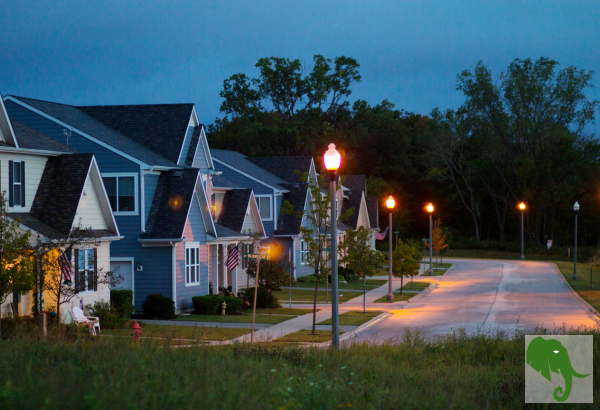
Community Safety: It Takes a Village
Some of our previous blogs focused on personal safety, a few in particular discussed safety around the home. We’ve covered topics like Enhancing Security Outside …
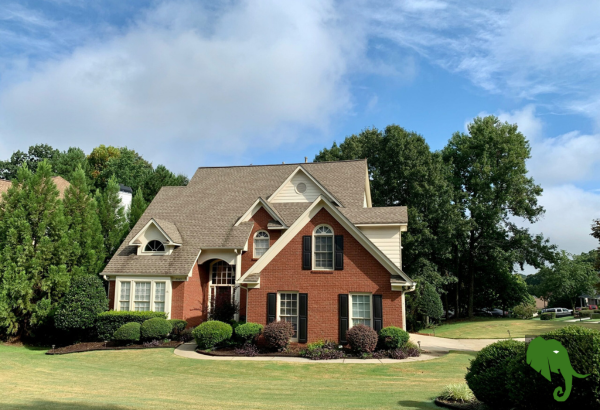
How to Make Your Home More Secure
Overview Season 1, Episode 7 We dive deep into practical and actionable strategies to make your home more of a fortress of safety. We take …
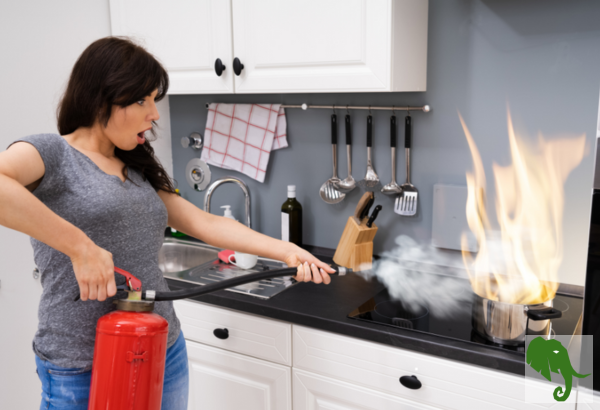
Proper Use of Fire Extinguishers
Have you ever experienced a grease fire while cooking, only to realize you weren’t prepared to put it out? Maybe you tried using water and …
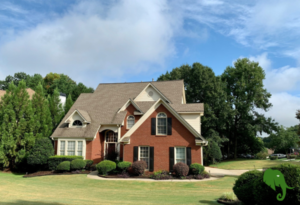
Enhancing Security Outside Your Home
In this two-part series, we’ll explore practical ways to enhance safety and security in and around your home. This post focuses on exterior measures you …

Read other OwnGuard Solutions blog posts
Read our other posts centered around being safer and better prepared.

